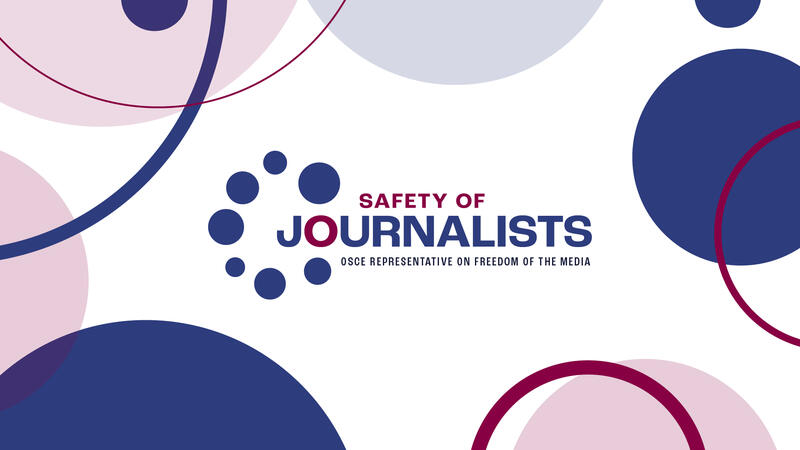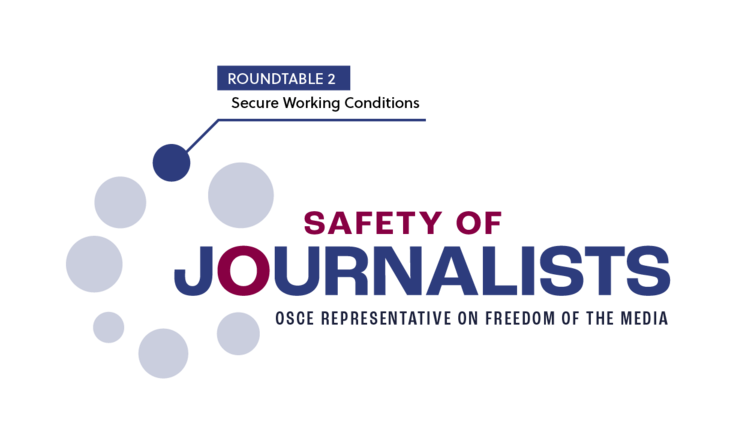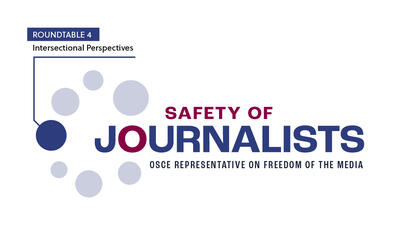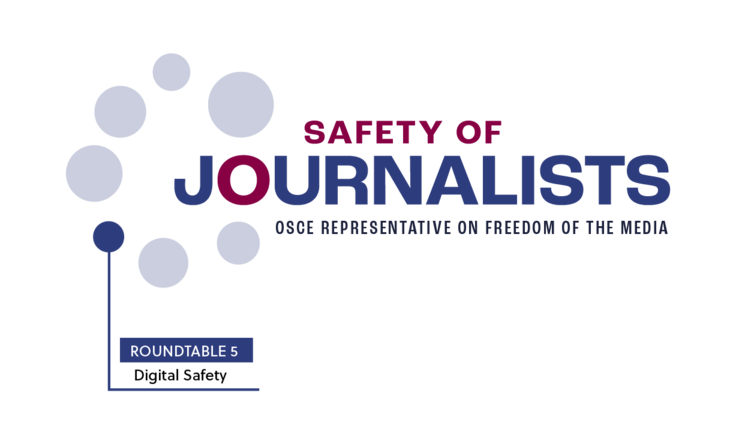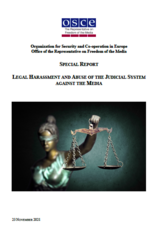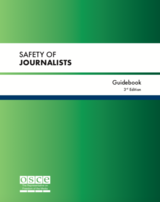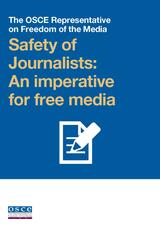
Project
Safety of Journalists


Quick links
- Project period:
- May 2022 - December 2027
- Implemented by:
- OSCE Representative on Freedom of the Media
- Fields of work:
- Media freedom and development
Overview
The OSCE Representative on Freedom of the Media monitors the safety of journalists, particularly in cases of physical attacks, incarceration and harassment. He responds quickly and directly with the participating States and other parties concerned through diplomatic channels and public statements. In addition, the Representative on Freedom of the Media also assists the participating States in furthering media freedom.
The "Safety of Journalists" project was launched in 2022 to take stock of existing policies and measures in OSCE participating States to promote the safety of journalists as well as identify persisting gaps and to develop recommendations based on good practice examples. As part of the project, the Representative organized seven roundtables, each covering another aspect of the topic of safety of journalists: (1) data collection, analysis and reporting on attacks and violence against journalists and promotion of journalistic work; (2) secure working conditions; (3) safety of journalists in conflict situations; (4) intersectional perspectives; (5) digital safety; (6) legal harassment; (7) police prevention and fight against impunity.
Furthermore, the project has established a Network of National Focal Points on Safety of Journalists to facilitate the continuous exchange of experiences and national initiatives among OSCE participating States.
Initiatives
Thematic roundtables
The importance of data
1st Roundtable
The first roundtable focused on data collection, analysis and reporting on attacks and violence against journalists and the promotion of journalistic work. The double dimension of data collection was discussed: as a basis to provide a comprehensive understanding of violations and attacks against journalists in a specific context; and based on that, to develop effective measures for the prevention and protection of journalists from such attacks. As such, the role of data collection and analysis is a pivotal first step for improving the safety situation of media workers.
Secure working conditions of journalists
2nd Roundtable
The second roundtable of the Safety of Journalists project focused on the need to improve the working conditions for journalists – a topic that has gained in relevance in a time when the traditional media business models have been turned upside down and media workers' rights have been eroded. The increasing economic pressure, exacerbated by the rise of digital media and online news channels, combined with job insecurity and short deadlines, has increased the requirements on journalistic work, turning journalism into a precarious profession. The roundtable focused on measures to improve the working conditions for journalists and the need for media organizations to adapt to new realities.
The safety of journalists in conflict situations
3rd Roundtable
The third roundtable will focus on the safety of journalists in conflict situations. The purpose of the roundtable is to highlight the specific dangers and challenges for journalists reporting from war, to discuss their protection needs and measures to be taken to allow journalists to carry out their important work during conflict. Furthermore, it will address the different layers of challenges that journalists in exile face and develop recommendations on how to ensure journalists’ protection in exile and ability to continue their work.
Intersectional perspectives
4th Roundtable
The fourth roundtable aims at shedding more light on “intersectional perspectives” regarding journalists’ safety. The participants will examine and discuss how different aspects of identity and inherent or assumed characteristics (which stem from factors that are only attributed or perceived by others, including among others gender, race, religion, ethnicity, disability, age, socio-economic status) affect the safety and protection of journalists. The purpose of the roundtable is to understand the concept of intersectionality more in depth, also in terms of representation and diversity of voices, and to look for ways to improve journalists’ safety in this regard.
Legal harassment
5th Roundtable
The fifth roundtable of the Safety of Journalists project will focus on “legal harassment”. The use of legal instruments and procedures to harass, intimidate, hinder and stifle journalistic work is in stark contradiction to the safety of media workers as established in various OSCE principles on freedom of expression and freedom of the media. During the years, participating States have made numerous commitments that underline the importance of independent media being able to do their work freely and safely. The aim of this roundtable is to discuss the topic of legal harassment, in order to prevent attacks and violence against journalists in a comprehensive and inclusive manner. The invited experts will discuss the concept of legal harassment in this context and help to develop a broader understanding among the OSCE participating States how best to develop national measures and mechanisms to prevent violence against journalists and promote their safety.
Police Prevention and the Fight against Impunity
6th Roundtable
The sixth roundtable of the Safety of Journalists project will address the role of the police and other law enforcement actors in ensuring journalists’ safety and ending impunity. Police and law enforcement have the obligation to protect the media and to enable them to report freely and safely on events of public interest, including public assemblies and demonstrations. They also have an essential role to play in the swift and effective investigation of attacks against journalists in order to bring the perpetrators to justice and prevent a culture of impunity. The sixth roundtable will provide the opportunity to discuss how cooperation among law enforcement and judicial actors can be increased in order to end impunity for crimes against journalists and what mechanisms can help to prevent ill-treatment of media workers and to swiftly and effectively investigate attacks against journalists.
Digital Safety
7th Roundtable
The seventh roundtable of the Safety of Journalists project will focus on “Digital safety”, addressing cyber violence, spyware and other challenges emanating from the digital sphere. Digital innovations can be used to attack, threaten and discredit journalists in new and increasingly penetrative ways. Journalists rely on online platforms to distribute their content and to interact with their sources and audiences. However, social media platforms that allow user interaction, wikis for collaborative storing, creating and editing of content or content hosting services can all present security issues. As new technologies become available, the need to strike a balance between safety and privacy in the digital world and freedom of expression is key. Given the scale and severity of online threats, including surveillance, and attacks against journalists and other media professionals across the OSCE region and their damaging effects on the functioning of democratic societies, measures, novel ideas and the exchange of existing best practices is necessary to strengthen the protection of journalists and ensure their digital safety.
News and updates
Resources
Publications, guides and materials developed under the project
OSCE in action
The Organization’s work and teams in related fields
The OSCE’s work is based on a comprehensive security concept, encompassing 23 fields of work. Learn more about the Organization’s activities and teams working in fields relevant to this project.
